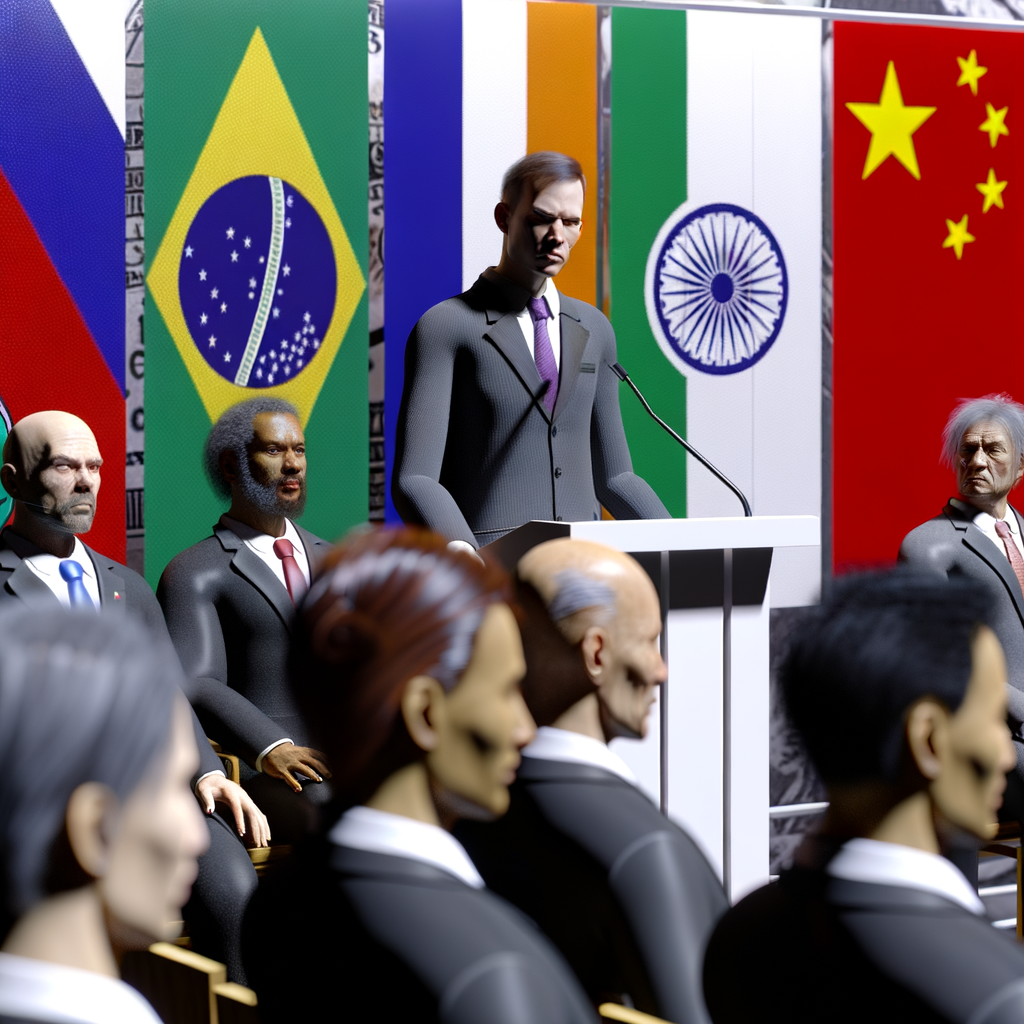Trump Proposes 100% Tariffs on BRICS Nations Amid Dollar Replacement Plans
The global economic stage witnessed a potential shake-up as former U.S. President Donald Trump proposed a dramatic 100% tariff on BRICS nations. This move comes in response to the coalition’s reported plans to undermine the dominance of the U.S. dollar. With the growing influence of BRICS, which includes **Brazil, Russia, India, China, and South Africa**, Trump’s proposal has ignited discussions on the future of international trade and currency exchanges.
The Growing Influence of BRICS
BRICS nations have been gaining momentum on the global economic front, boasting some of the fastest-growing economies and vast natural resources. This coalition has been exploring avenues to reduce dependency on the U.S. dollar by promoting a new currency system among its member countries. Their efforts signal a shift in the balance of economic power, which could have profound implications for **global trade** and **financial stability**.
Some of the motivations behind BRICS’ move include:
- Desire for economic independence from the U.S. dollar
- Potential to leverage collective bargaining power
- Enhancement of trade relationships within the bloc
Trump’s Tariff Threats: A Reactionary Measure?
Trump’s proposed tariffs on BRICS nations are seen as a countermeasure to protect American economic interests. The former president has long been a proponent of **”America First”** policies, and his latest proposal underscores a continued focus on safeguarding U.S. economic sovereignty.
Key aspects of Trump’s tariff proposal include:
- 100% tariffs targeting BRICS nations
- Potential impacts on imports from these countries
- Reinforcement of the U.S. dollar’s global dominance
The proposed tariffs could have significant repercussions, affecting not only BRICS nations but also the global economy at large. These measures may lead to:
- Increased costs for American consumers and businesses
- Potential trade wars and retaliatory tariffs
- Shifts in global supply chains
Global Reactions and Implications
The international community has been closely monitoring these developments, with varied reactions from economists and political leaders alike. While some argue that Trump’s proposal is a necessary step to combat the growing influence of BRICS, others caution against the potential fallout of such aggressive trade measures.
Key considerations for global stakeholders include:
- Evaluating the long-term viability of BRICS’ currency initiatives
- Assessing the risks of escalating trade tensions
- Navigating potential disruptions in international trade
The Road Ahead
As BRICS explores alternatives to the U.S. dollar and Trump proposes significant tariffs, the landscape of international trade and finance is poised for potential transformation. While these developments pose challenges, they also offer opportunities for countries to redefine their economic strategies and reinforce alliances.
Ultimately, the path forward will depend on the ability of global leaders to navigate these complex dynamics and pursue solutions that foster stability and mutual growth. As the world watches, the interplay between BRICS and the United States will continue to shape the future of the global economy.



